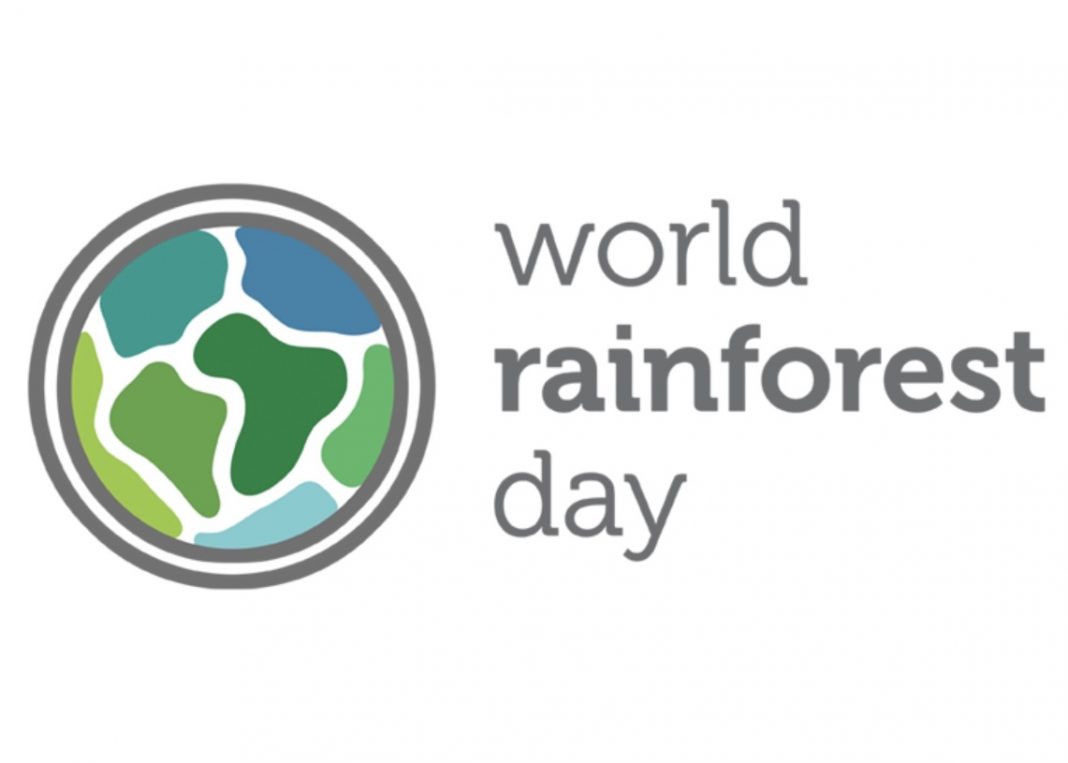Rainforests are some of the most diverse, bountiful, and beautiful places in the world. They are found in several regions near the equator including Central and South America, Central and Western Africa, and Southeast Asia. The whole world relies on the benefits of the rainforests such as providing oxygen, freshwater, climate mitigation, species biodiversity and much more. Unfortunately the world’s rainforests have been in trouble for some time now. It is estimated that an area the size of forty football fields is destroyed every minute. Thankfully, because of organizations such as World Rainforest Day, conservation of the rainforests can turn the trajectory around and help them thrive.
Tell us about how World Rainforest Day came to be and what is your affiliation with the Rainforest Partnership?
The first-ever World Rainforest Day was observed on June 22, 2017, as an initiative launched by Rainforest Partnership in close collaboration with a coalition of partners around the globe committed to the conservation of rainforests. The goal was simple: to bring the rainforests to the world. Rainforests can be an abstract idea for many people out there, especially for those living far away from these ecosystems. Building on the premise that people tend to protect what they know and cherish, World Rainforest Day was conceived as a movement – not just a single-day action – to inform the global community on all aspects related to rainforests, raise global awareness of their role as critical ecosystems for the health of our planet and ultimately, on the need to protect them urgently, effectively and together. It was also in line with the mission of amplifying the progress of all those individuals and initiatives working in the field of rainforest conservation and restoration, and was a way to help them join forces, share knowledge, reach out to potential collaborators and boost the impact and outreach of their actions.
International and World Days – such as Earth Day, World Environment Day or the International Day of Biological Diversity – are powerful initiatives to ignite action and we have seen them connect and mobilize millions of people across borders. We noticed a day solely dedicated to rainforests didn’t exist; there are International Days on Tropical Forests, on Forests, on the Tropics, but not a single one focusing on this specific ecosystem. These are among the most threatened forests, and those that host the highest level of biological and cultural diversity – the need to carve out individual attention for them was clear.
Your organization works closely with the local communities and indigenous people. Why is it so important to work alongside them and what have you learned with your inclusive approach?
We always work in equal partnership with local and indigenous rainforest communities, meaning that even beyond inclusivity, our community partners are actually leaders in the projects that we work on together. This is so important for the long term success and sustainability of the work we do. Communities eventually carry on and lead the conservation and economic projects without our direct involvement, which means that the initiatives and impacts will outlast the official end date of a project.
These close partnerships are also critical because they ground our work in what is called, “ground truth.” This means that because we work so closely and consistently with the communities we partner with, our projects are compatible with their social and cultural practices and built on a strong foundation of understanding of the social, economic, cultural, and historical context for each project, community, and location. Communities know their own needs and visions for the future best, and should always lead in deciding what projects work best for them and how they are implemented and expanded. This is central to all of our work – supporting communities to be empowered to lead conservation of their own lands and to support themselves economically, in the ways that work best for them.
Creating awareness and getting people to care about something they may never experience or have access to can be a daunting task. How can people who don’t live near a rainforest further your initiatives and what can they do to help?
Inspiring and activating global audiences to further rainforest protection is another one of our focuses; although the impact for forests is indirect, it is going to take all of us, everywhere, to accomplish our ambitious goal of net-zero deforestation by 2030. We need people from all backgrounds, professions, ages, cultures, and walks of life, working together as one coalition. But it can be hard to connect people to rainforests when they are more of a distant idea rather than a real place. To address this, we create initiatives that bring the rainforests to people – essentially creating ways for all sorts of people to feel so connected to rainforests, rainforest biodiversity, and rainforest communities, that they are inspired to join our coalition of partners working together to protect them.
Through World Rainforest Day, Films for the Forest, our annual film competition, and our youth branch Gen Z for the Trees, we connect to many different audiences and communities to inspire people to take the next step – to act. Because we value all kinds of capital, from time to talent, resources, and expertise, we offer opportunities for anyone to work with us to support our work and mission. We bring together diverse voices, talents, and passionate people, because everyone has a role to play and we need each other.
World Rainforest Day heavily emphasizes collaboration and partner engagement. How has implementing this strategy affected your goals in achieving your mission?
It’s true that one of our main goals for this 2021 edition of WRD was to ensure sustained collaboration, activation, and knowledge exchange all year round. We did so by reinforcing communication with partners, organizing monthly partner meetings, creating podcasts and content in line with our mission, and jumping on the opportunity to participate in international events as a way to spotlight our partners. We are building a community to foster collaboration. And we’re thrilled with the results – unexpected collaborations have emerged since then, not only between Rainforest Partnership and other conservation and environmental protection organizations, but among our partners and collaborators, who have been able to find and connect with one another.
In fact, we have so many impactful partners to showcase this year that for the first time, we’ve launched a global summit, Rainforest Ambitions, enabling not just one day of celebration, but three! Jam-packed with online panels, workshops, guided meditations, film screenings and entertainment events, it was all crafted in close collaboration with a great network of partners and amplifiers. It has been so gratifying to tap into this collective action and enthusiasm. This year, we’re truly capturing so many different voices and identities in the field.
What does the future hold for World Rainforest Day and what message would you like to portray to the world?
World Rainforest Day has grown as a movement year after year. Five years ago, it emerged as an idea, calling for local activation. Today, it is a global network of people connected not just by the same ideals, but the same purpose: protecting our rainforests, period. Among our global community we have researchers, non-profit organizations, indigenous groups and leaders, youth environmentalists, film-makers, artists, experts from the public sphere, innovators and business representatives – it is overwhelming to experience the global activation we dreamt of when WRD first launched. We expect the movement to grow, and Rainforest Ambitions to grow with it, becoming a notable global summit where more and more voices can be amplified and heard in this mission of protecting and restoring the beauty, integrity and well-being of our rainforests and the communities living in, or depending on them.
The work you’re doing to conserve the rainforests is of vital importance for our global community. Thank you for your efforts and we look forward to following along.

